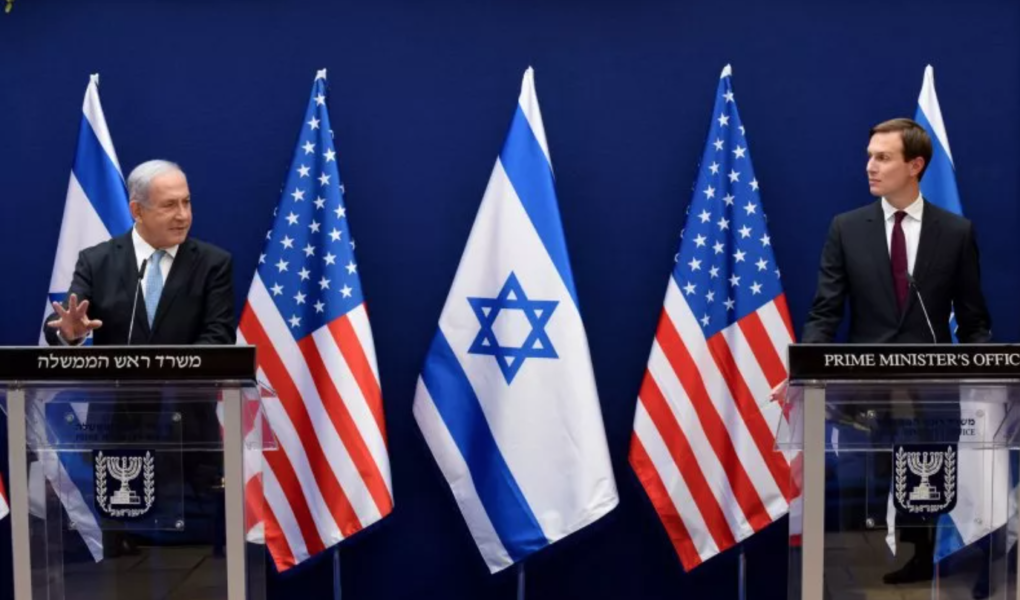President Trump rightly heralded recent peace agreements Israel made with the United Arab Emirates and Bahrain as “the dawn of a new Middle East.” However, with Washington possibly selling advanced F-35 aircraft to the UAE in the bargain, these landmark Abraham Accords should prompt similarly momentous action to maintain Israel’s qualitative military edge. The visit of Israel’s defense minister to the Pentagon yesterday, the second such visit in recent weeks, reflects Israel’s sense of urgency for such action.
Ensuring Israel’s military edge is in America’s basic self-interest and commands overwhelming bipartisan support. It means assisting Israel in maintaining military superiority over its neighbors, so that it can defend itself by itself.
As the United States retrenches from the Middle East, the value of a strong and capable Israel has only grown. Israel has shouldered the burden of countering U.S. enemies (Iran, ISIS, Hezbollah and the Muslim Brotherhood) while strengthening the security of U.S. partners (Jordan and Egypt), without requiring American boots on the ground.
Israel’s edge, however, has been eroding for years. Iran has been expanding its regional footprint and boosting the capabilities of Hezbollah, Hamas, Islamic Jihad, the Houthis and other Shia militias in Iraq, Lebanon and Syria, all while continuing to develop its nuclear program. It, and an increasingly aggressive Turkey, have invested in drones, advanced air defense capabilities and ballistic missiles. Israel’s Arab neighbors, in response, have embarked on buying sprees of advanced weapons.
Middle Eastern instability means today’s friend could become tomorrow’s adversary. The UAE, an American ally and treaty partner with Israel, poses no threat today to Israel, but one can’t be sure what the future holds. What we do know is that Qatar, hardly a reliable U.S. partner, just requested to purchase F-35s, with other regional countries sure to follow.
Previously, when the United States sold advanced weapons to Arab countries, it subsequently supplied Israel with more weaponry. For instance, in 1989, after selling Saudi Arabia hundreds of latest-generation tanks, the United States emplaced $100 million of military equipment in Israel, and accessible to Israel, in a stockpile known as WRSA-I.
We recently spelled out several steps America should take to preserve Israel’s ability to defend itself by itself, and one of the most important is to restock the WRSA-I with modern equipment, especially precision-guided munitions (PGMs) such as the Joint Direct Attack Munitions. The existing stockpile has become obsolete and useless. We understand it hasn’t been upgraded since before the Obama administration, over 10 years ago.
PGMs are crucial for Israel because they can accurately hit ground targets while limiting collateral damage such as civilian casualties. Israel already uses many U.S.-sourced PGMs to roll back Iran’s region-wide military entrenchment. But in the event of a major war with Iran and its proxy Hezbollah with its 130,000 missiles and rockets, it will need many more. An emergency resupply of Israel, amid conflict, such as during the 1973 Yom Kippur War, would take time. Better to plan ahead.
Prepositioning PGMs in WRSA-I and providing Israel emergency access (via sale or transfer), while retaining U.S. control, would solve this shortfall. It also would be consistent with language in the current Senate version of the National Defense Authorization Act: “To the extent practicable, the Secretary of Defense should take further measures to expedite deliveries of precision-guided munitions to Israel.”
However, the Pentagon has been reluctant to do so. Military planners partly see WRSA-I as designated for Israeli use, and the United States has faced challenges building up its own PGM stocks as manufacturing capacity has been limited amid general military industrial contraction. Israel is not highly integrated into U.S. military operations or global logistics supply chains. Some have even raised concerns, though not persuasively, about the physical security of stockpiles in Israel.
The dawn of a new Middle East requires a new paradigm for U.S. military planners. The United States should view WRSA-I as a regional prepositioning hub for U.S. operations. With America asking its allies generally to do more, an upgraded WRSA-I can help provide Israel the tools to defend itself and U.S. interests. Also, the Abraham Accords demonstrate that America’s Arab and Israeli allies share many common interests, and America’s Arab partners can also make use of WRSA-I. It could accompany, or follow, the Pentagon shifting Israel from the current area of responsibility (AOR) of the U.S. European Command to that of the U.S. Central Command, which has an AOR that includes the greater Middle East.
A regionalized stockpile could support operations to defend all of America’s regional interests, covering contingencies for U.S. forces in Europe and throughout the greater Middle East.
As it does already, Israel would continue paying much of the depot’s upkeep, and the United States would retain control of the weapons, until transferred to Israel or others. At the same time, new infrastructure likely would be needed to reflect the depot’s expanded mission.
The possible sale of F-35s to the UAE should inject new urgency into supporting Israel’s ability to defend itself, and America’s interests in the Middle East, by strengthening Israel’s qualitative military edge, including by updating our prepositioned stockpile in the Jewish state.
Michael Makovsky, a former Pentagon official, is President and CEO of the Jewish Institute for National Security of America (JINSA). Gen. (ret.) Charles Wald, former Deputy Commander of U.S. European Command, is a Distinguished Fellow at JINSA’s Gemunder Center for Defense and Strategy.
Originally published in Newsweek

